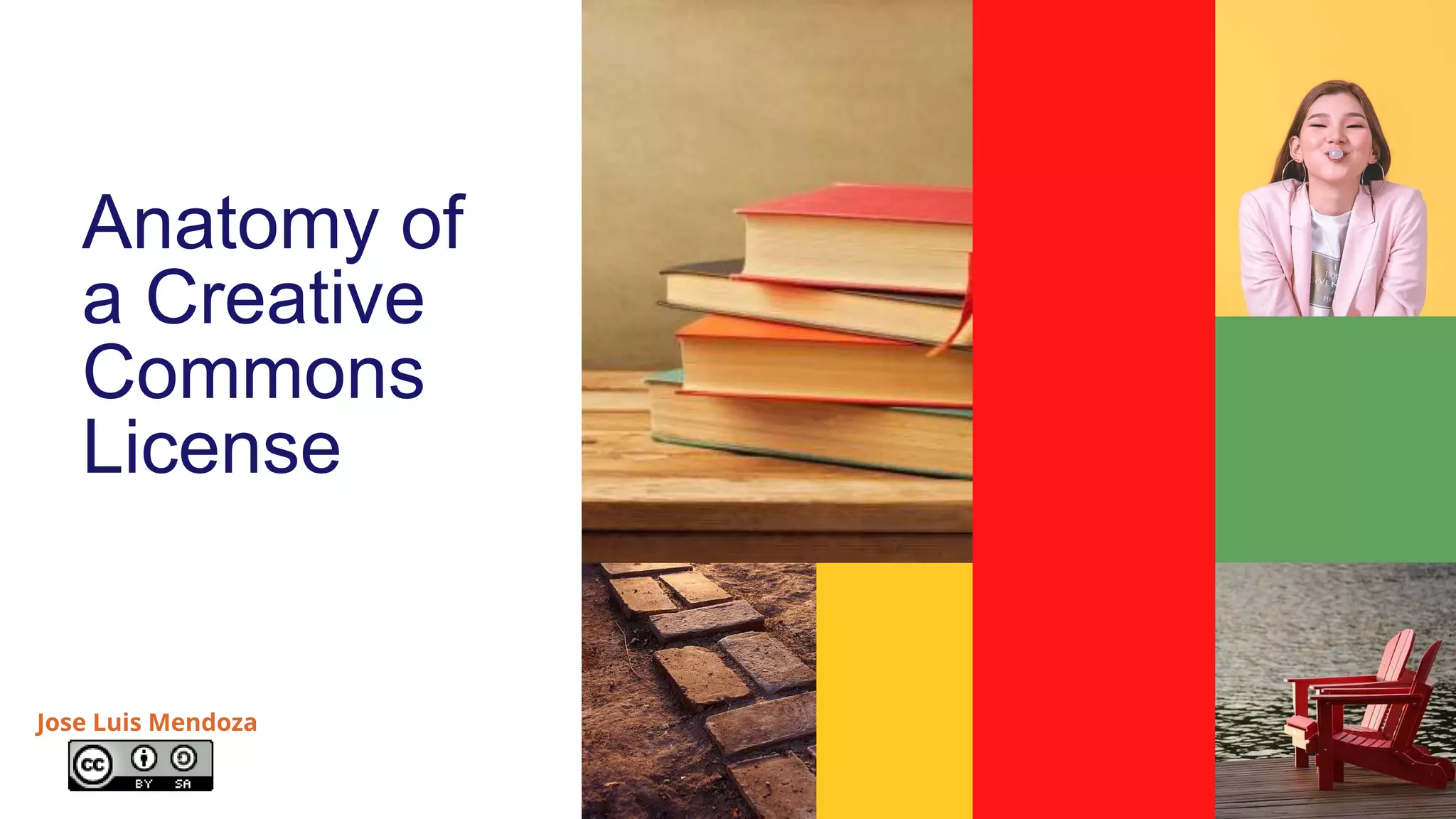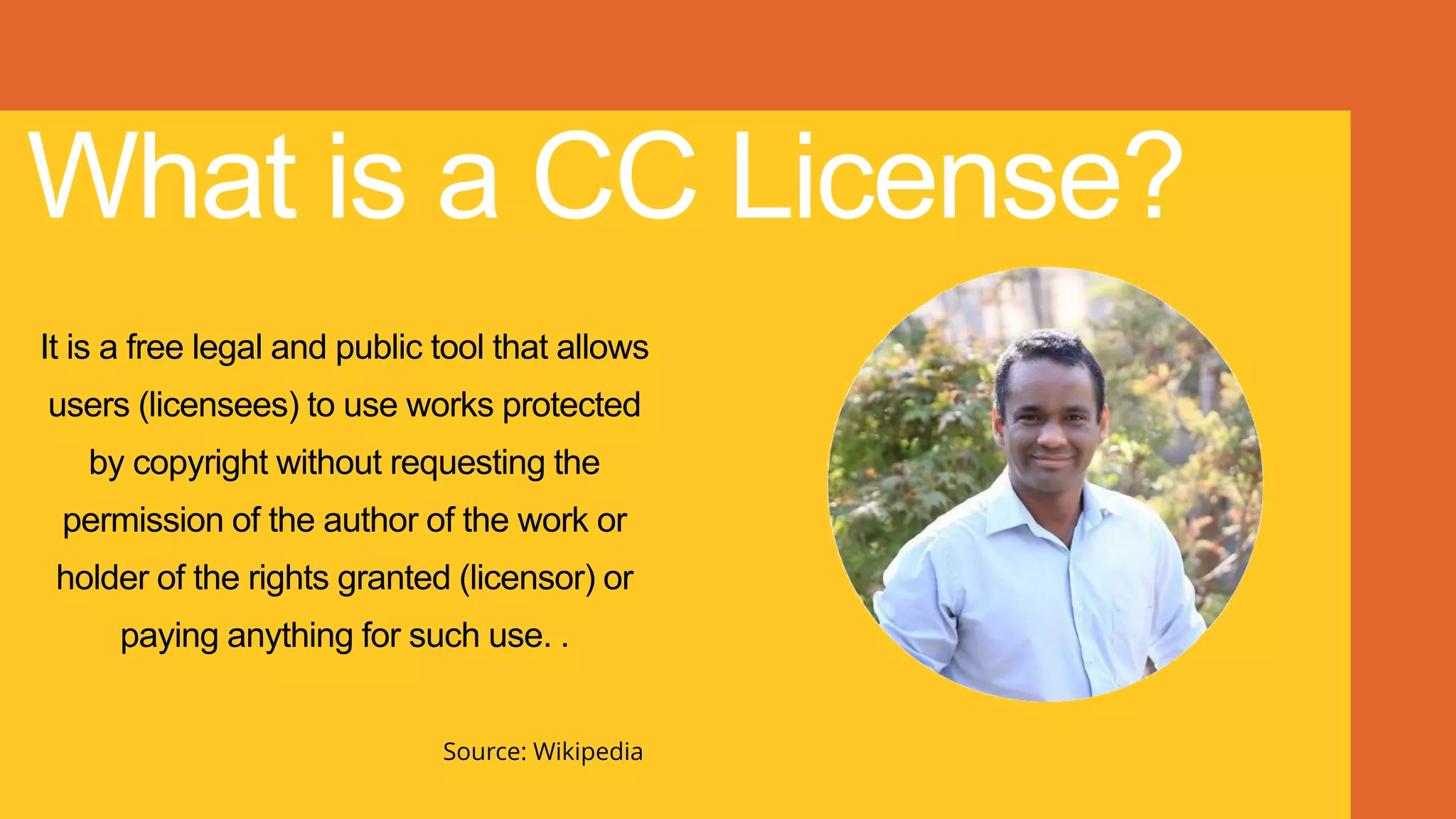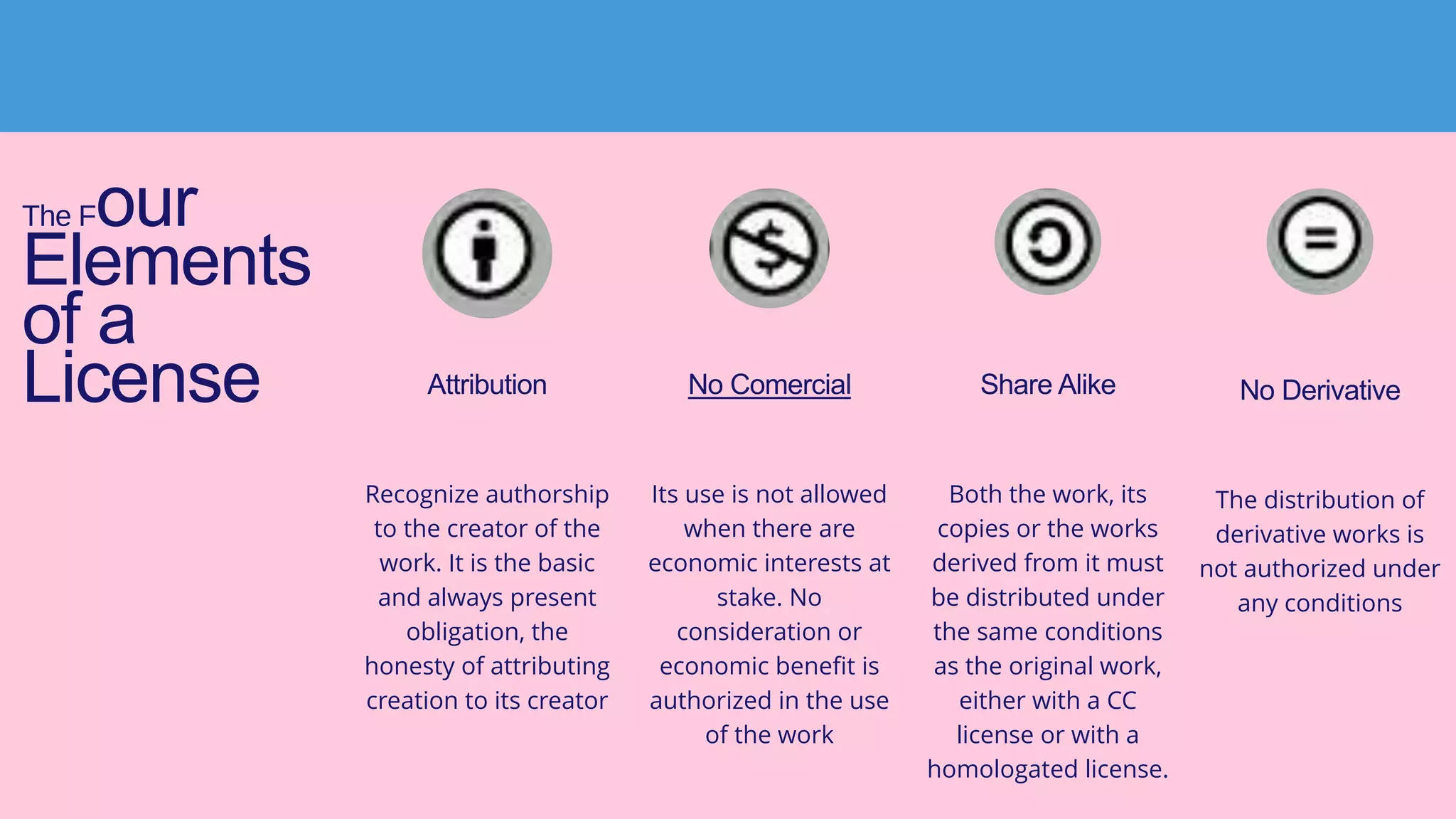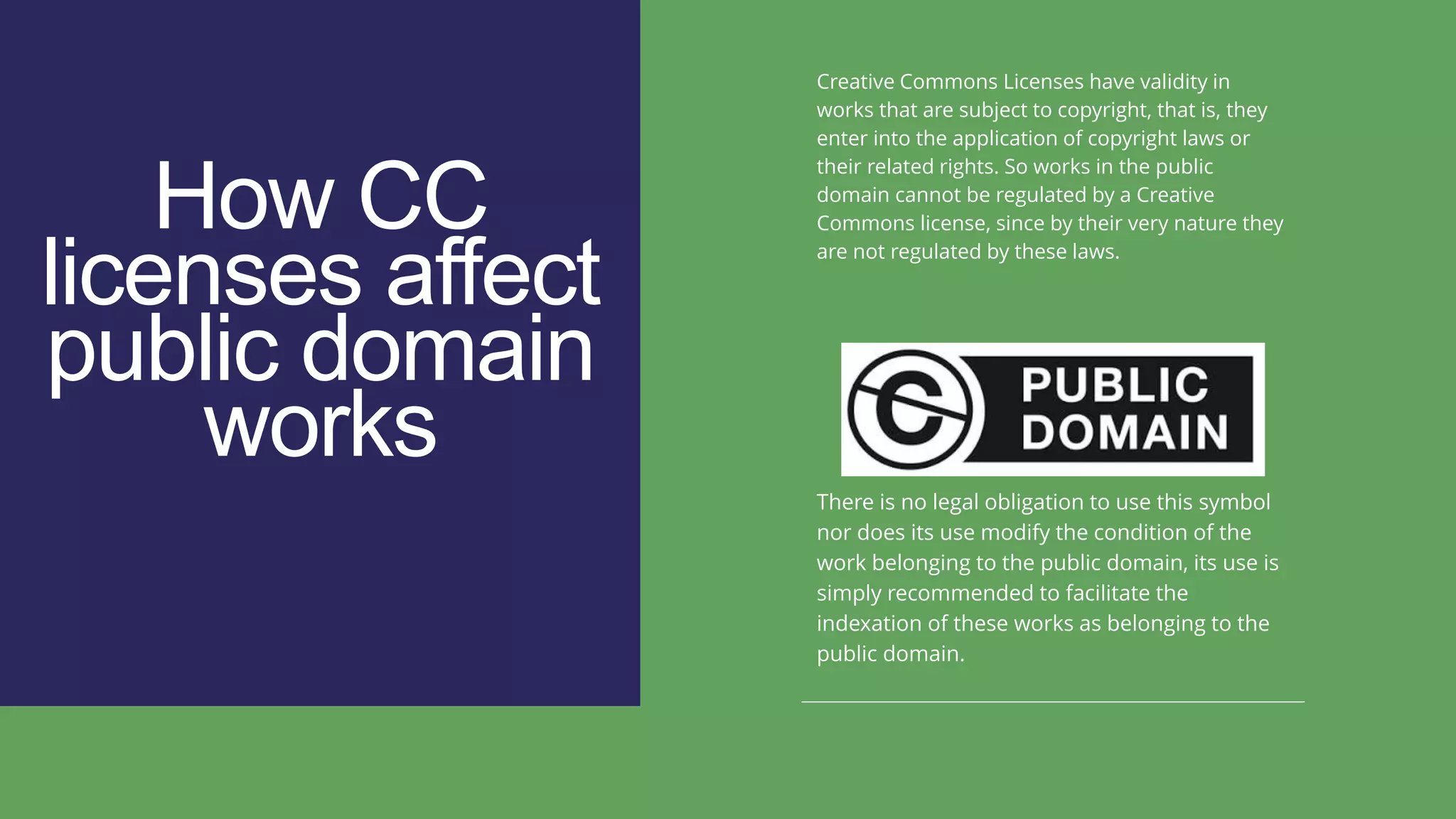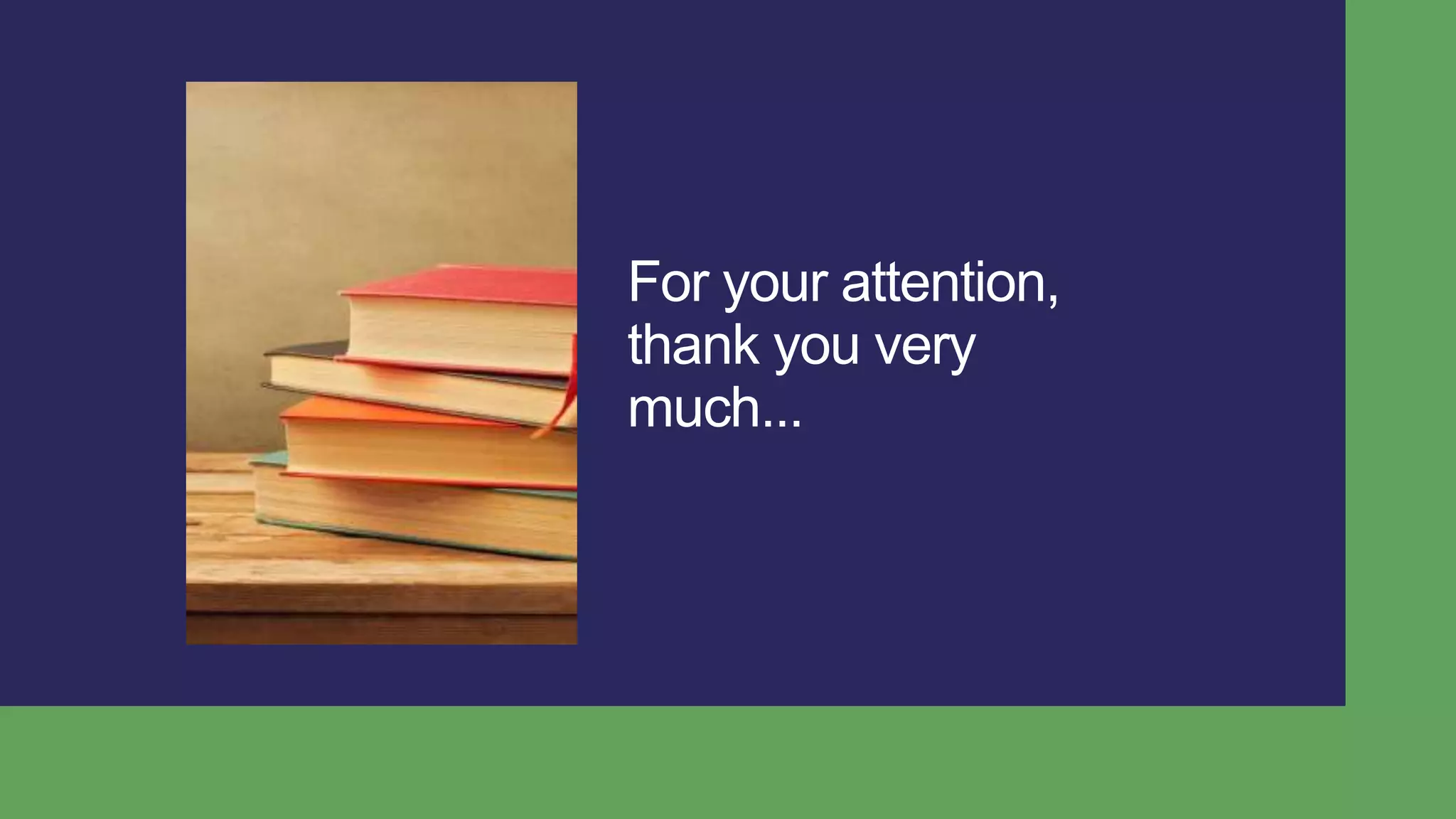The document discusses Creative Commons licenses, which are free copyright licenses that allow for reuse and distribution of works without permission as long as attribution is provided. It describes the six main Creative Commons licenses which vary based on whether commercial use, modifications, and further distribution of modifications are allowed. The licenses have three layers including a legal code, human-readable deeds, and machine-readable code. Creative Commons licenses only apply to works that are copyrighted and do not affect public domain works or override copyright limitations/exceptions.
